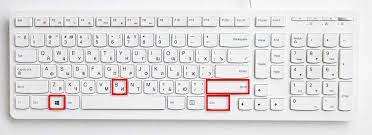Are you experiencing graphic glitches or performance issues with your computer? Don’t worry, we’ve got you covered!
In this article, we’ll show you how to reset your graphics card to optimize its performance and fix any problems you may be facing. By following our step-by-step guide, you’ll be able to easily reset your graphics card and get it back to running smoothly.
So, let’s dive in and get your graphics card back on track!
The Importance of Resetting Your Graphics Card
If you’re experiencing performance issues, you should definitely consider resetting your graphics card.
Resetting your graphics card can help resolve many common problems and improve overall performance.
When your graphics card is not functioning properly, it can cause lag, screen flickering, or even crashes in your games or applications.
By resetting your graphics card, you can clear any temporary glitches or conflicts that may be causing these issues.
It’s a quick and simple process that can be done through your computer’s settings or by physically removing and reinserting the graphics card.
Understanding the Signs That Your Graphics Card Needs a Reset
When your computer’s display starts flickering or freezing, it’s a sign that your graphics card may need a reset. Sometimes, the graphics card can get overwhelmed with all the tasks it has to handle, causing it to malfunction. You might also notice strange artifacts appearing on your screen or experience a drop in performance while playing games or running graphics-intensive applications.
These are all indicators that your graphics card needs a reset to get back on track. Resetting your graphics card can help resolve these issues by clearing any temporary glitches or conflicts that may have occurred. It’s a simple process that involves restarting your computer or updating your graphics card drivers.
Step-by-Step Guide to Resetting Your Graphics Card
To solve any issues with your graphics card, you can simply restart your computer or update the drivers.
Restarting your computer is often the first step in troubleshooting any computer-related problem, including graphics card issues. It helps to clear any temporary glitches or conflicts that may be causing the problem. To restart your computer, click on the Start menu, select the Power button, and choose Restart.
Updating the drivers is another effective way to fix graphics card problems. Drivers are software that allow your operating system to communicate with your hardware. Outdated or incompatible drivers can lead to various issues with your graphics card. To update your drivers, go to the manufacturer’s website and look for the latest driver for your specific graphics card model.
Common Issues and Troubleshooting Tips for Graphics Card Resets
Restarting your computer is a simple and effective way to resolve common issues with your graphics card. Sometimes, your graphics card may encounter problems that can be easily fixed by a simple restart.
For example, if you notice that your screen is flickering or displaying distorted images, a restart can often resolve this issue. By restarting your computer, you are giving your graphics card a fresh start and allowing it to reset any temporary glitches or conflicts.
Additionally, restarting your computer can also help resolve issues with driver updates or compatibility. It is important to remember that restarting your computer should be one of the first troubleshooting steps you try when encountering graphics card problems.
Best Practices for Maintaining a Healthy Graphics Card
Make sure you regularly clean the fans and vents of your computer to prevent overheating and maintain optimal performance of your graphics card. Dust and debris can accumulate over time, clogging the fans and vents, which can lead to poor airflow and increased temperatures. Use compressed air or a soft brush to gently remove the dust from the fans and vents.
Additionally, ensure that your computer is placed in a well-ventilated area with sufficient airflow to prevent heat buildup. It is also important to keep your graphics card drivers up to date. Manufacturers often release driver updates that improve performance and address potential issues.
Regular maintenance and keeping your system cool will help extend the lifespan of your graphics card and ensure smooth and reliable performance.
Conclusion
In conclusion, resetting your graphics card is a crucial step in maintaining its performance and resolving any issues that may arise. By understanding the signs that indicate a reset is needed and following the step-by-step guide provided, you can easily reset your graphics card and ensure its optimal functioning.
Additionally, familiarizing yourself with common issues and troubleshooting tips will help you overcome any challenges that may occur during the reset process. Remember to practice regular maintenance to keep your graphics card in top shape.
